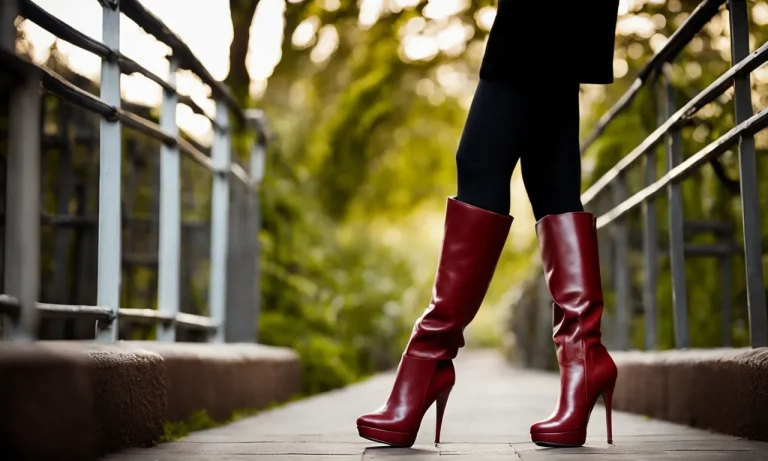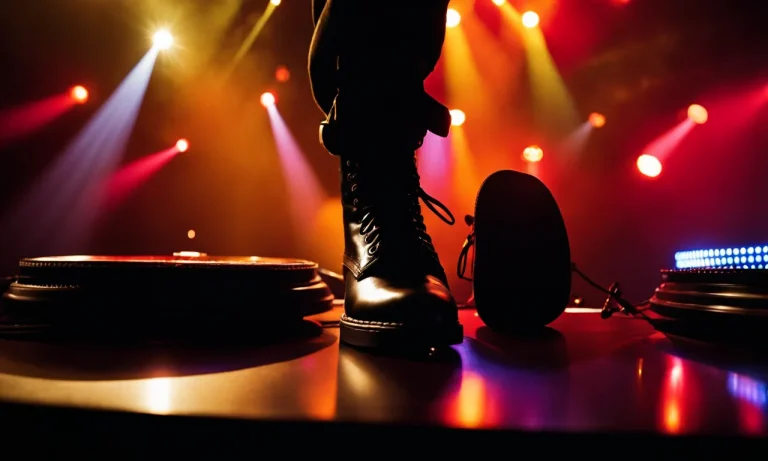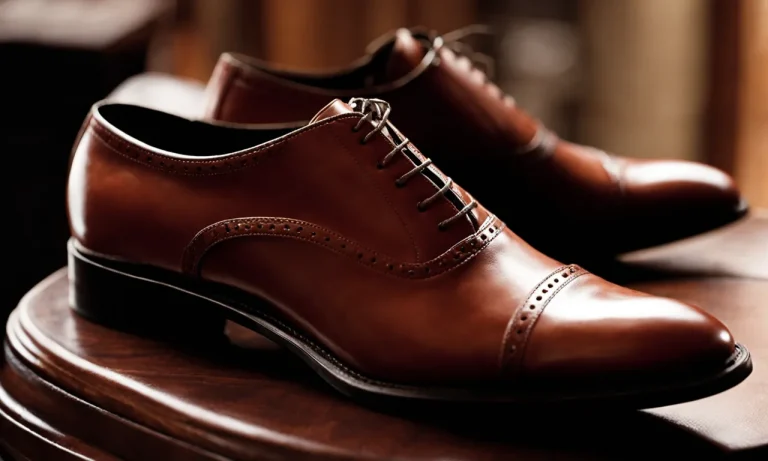Steel toe boots are essential protective footwear for many workers, providing a durable toe box that can prevent serious injuries from impacts and compression forces. If your job requires steel toes, you may be wearing them for 8+ hours every day. But is it safe to wear steel toe boots daily?
What are the pros and cons, and how can you maximize comfort?
If you’re short on time, here’s the quick answer: Wearing steel toe boots daily is generally safe if you choose boots that fit well and allow your feet to breathe. To prevent issues, focus on comfort features and proper boot care. Change into regular shoes after work to give feet a break.
Benefits of Wearing Steel Toes Daily
Protect Toes from Accidents and Dropped Objects
One of the primary benefits of wearing steel toe boots daily is the protection they offer against accidents and dropped objects. These boots are designed with a reinforced toe cap made of steel, which acts as a shield for your toes.
Whether you work in construction, manufacturing, or any other industry where there is a risk of heavy objects falling or rolling onto your feet, steel toe boots can save you from potential injuries.
According to the Occupational Safety and Health Administration (OSHA), foot injuries are a common occurrence in the workplace, with over 60,000 foot injuries requiring days away from work each year. Wearing steel toe boots significantly reduces the risk of these injuries, providing you with peace of mind and allowing you to focus on your work without worrying about potential accidents.
Provide Support and Stability for Work Tasks
Aside from protecting your toes, steel toe boots also provide excellent support and stability for various work tasks. These boots are designed to offer proper arch support, which can help reduce the strain on your feet and prevent fatigue, especially if you spend long hours on your feet.
The added support can also improve your balance and reduce the risk of slips, trips, and falls in the workplace.
Furthermore, steel toe boots often come with additional features such as cushioned insoles and padded collars, which enhance comfort and reduce the likelihood of foot pain or blisters. By wearing steel toe boots daily, you can ensure that your feet remain comfortable and well-supported throughout the workday.
Durable and Withstand Harsh Conditions
Steel toe boots are known for their durability and ability to withstand harsh working conditions. These boots are typically made with high-quality materials that can withstand heavy use, extreme temperatures, and exposure to chemicals or other hazardous substances.
Whether you work in construction sites, factories, or outdoor environments, steel toe boots are designed to endure tough conditions. They are resistant to abrasion, impact, and puncture, making them a reliable choice for workers who face challenging environments on a daily basis.
Investing in a pair of high-quality steel toe boots will not only provide you with long-lasting protection but also save you money in the long run. By choosing boots that are built to withstand harsh conditions, you can avoid frequent replacements and ensure that your feet remain safe and protected throughout your work life.
Potential Downsides of Daily Wear
Can Cause Foot Fatigue and Strain
While steel toe boots provide excellent protection, wearing them every day can lead to foot fatigue and strain. The added weight and rigidity of the steel cap can put extra pressure on the feet, especially if you are constantly on your feet or walking long distances.
This can result in discomfort, muscle fatigue, and even foot conditions such as plantar fasciitis. It is important to give your feet regular breaks and consider using supportive insoles to alleviate some of the strain.
May Lead to Excessive Sweating and Odor
One downside of wearing steel toe boots daily is the potential for excessive sweating and odor. The steel cap can restrict airflow to your feet, trapping heat and moisture. This can create the perfect environment for bacteria to thrive, leading to unpleasant foot odor.
To combat this, it is recommended to wear moisture-wicking socks and regularly clean and dry your boots to prevent the buildup of sweat and odor-causing bacteria.
Heavy Weight Can Contribute to Leg/Back Pain
Steel toe boots are known for their durability and protective features, but their heavy weight can take a toll on your legs and back. Constantly carrying the extra weight can lead to muscle strain and discomfort, especially if you are required to lift or move heavy objects throughout the day.
It is important to practice proper lifting techniques and consider incorporating exercises that strengthen your leg and back muscles to minimize the risk of pain and injury.
Choosing the Best Steel Toes for All-Day Wear
When it comes to wearing steel toe boots every day, it is essential to choose a pair that provides both comfort and protection. Here are some important factors to consider when selecting the best steel toe boots for all-day wear.
Look for Lightweight Materials like Aluminum Alloy
One of the key considerations when choosing steel toe boots for all-day wear is the weight of the boots. Heavy boots can cause fatigue and discomfort, especially if worn for extended periods. Look for boots that are made with lightweight materials like aluminum alloy.
These boots provide the necessary toe protection while minimizing the strain on your feet.
Prioritize Comfort Features Like Padded Collars
Comfort is crucial when it comes to wearing steel toe boots all day long. Look for boots that have padded collars. These provide extra cushioning around the ankle, reducing the risk of chafing and blisters.
Additionally, boots with cushioned insoles or shock-absorbing midsoles can provide added comfort and support.
Ensure Proper Fit to Avoid Rubbing and Slippage
A proper fit is essential for all-day comfort in steel toe boots. Ill-fitting boots can cause rubbing, blisters, and even foot pain. When trying on boots, make sure there is enough room in the toe box for your toes to move comfortably.
The boots should also provide adequate arch support and ankle stability to prevent slippage.
Consider Moisture-Wicking Linings and Breathability
Moisture and sweat buildup can make wearing steel toe boots all day an uncomfortable experience. Look for boots with moisture-wicking linings that help keep your feet dry and comfortable throughout the day.
Additionally, boots with breathable materials or ventilation features can improve airflow and prevent excessive sweating.
Replace Boots Regularly as Cushioning Breaks Down
Over time, the cushioning in steel toe boots can break down, leading to decreased comfort and support. It is important to replace your boots regularly to maintain optimal comfort and protection. As a general rule, consider replacing your steel toe boots every 6 to 12 months, depending on the level of wear and tear.
Remember, finding the right steel toe boots for all-day wear is crucial for your comfort and safety. By considering factors such as lightweight materials, comfort features, proper fit, moisture-wicking linings, and regular replacement, you can ensure a positive experience while wearing steel toe boots every day.
Caring for Your Feet and Boots
Take Boots Off During Breaks to Let Feet Rest
Wearing steel toe boots all day can put strain on your feet. To give them a break and prevent discomfort, it’s important to take your boots off during breaks whenever possible. This allows your feet to breathe and relax, reducing the risk of developing foot pain or fatigue.
Use those breaks to stretch your feet and ankles, increasing blood circulation and promoting overall foot health.
Wear Moisture-Wicking Socks to Keep Feet Dry
One common issue when wearing boots for long periods is sweaty feet. To combat this problem, invest in moisture-wicking socks. These socks are designed to pull moisture away from your feet, keeping them dry and comfortable throughout the day.
By keeping your feet dry, you can reduce the chances of developing blisters, fungal infections, or other foot conditions caused by excessive moisture.
Use Inserts or Insoles for Extra Cushioning
Steel toe boots are known for their durability, but they can sometimes lack in comfort. To enhance the overall comfort of your boots, consider using inserts or insoles. These additional cushioning layers provide extra support and shock absorption, reducing the strain on your feet and joints.
Inserts or insoles also help with arch support, making your boots more comfortable for long hours of wear.
Apply Powders/Creams to Prevent Chafing and Blisters
Chafing and blisters are common problems when wearing steel toe boots all day. To prevent these issues, consider applying powders or creams to areas that are prone to friction, such as the heel or toes.
These products help reduce friction and provide a protective barrier, minimizing the chances of developing painful blisters or chafing. Look for products specifically designed for foot care, and follow the instructions for application.
Disinfect Boots Regularly to Control Odor and Bacteria
Steel toe boots can sometimes develop unpleasant odors due to sweat and bacteria buildup. To keep your boots fresh and odor-free, it’s important to regularly disinfect them. You can use antibacterial sprays or wipes to clean the inside and outside of your boots.
Additionally, consider using odor-control products, such as activated charcoal inserts, to absorb any lingering smells. By maintaining cleanliness and hygiene, you can extend the lifespan of your boots and ensure a more pleasant wearing experience.
When to Reconsider Daily Wear
While steel toe boots are designed to provide maximum protection for your feet, there are certain situations where you may need to reconsider wearing them every day. Here are a few instances where you should take a step back and evaluate your daily footwear choice:
If Experiencing Significant Discomfort or Pain
If you find yourself experiencing significant discomfort or pain while wearing steel toe boots, it may be time to reconsider daily wear. While some discomfort is normal when breaking in new boots, persistent pain can be a sign that your boots are not fitting properly or are not providing adequate support.
It’s important to prioritize your comfort and well-being, so don’t hesitate to explore other footwear options if needed.
If Feet Have Developed Corns, Calluses, or Blisters
Developing corns, calluses, or blisters on your feet can be a clear indication that your steel toe boots are causing excessive friction or pressure on certain areas. These issues can be painful and may require medical attention if left untreated.
If you notice these foot conditions developing, it’s best to take a break from wearing steel toe boots daily and give your feet a chance to heal. Consider consulting a podiatrist for guidance on proper footwear or foot care.
If Boots Are Worn Out and No Longer Supportive
Over time, steel toe boots can wear out and lose their ability to provide adequate support and protection. If you notice that your boots have become worn down, have holes, or the soles are no longer providing the necessary traction, it’s time to replace them.
Wearing worn-out boots can increase the risk of foot and ankle injuries, so investing in a new pair is essential for your safety and comfort.
If Work Conditions Don’t Require Steel Toes
While steel toe boots are crucial in many industries, there may be certain work conditions where steel toes are not necessary. If your job does not involve heavy machinery, hazardous materials, or other potential foot hazards, you may be able to opt for non-steel toe footwear.
This can provide you with more comfort and flexibility throughout the day. However, it’s important to consult your employer or safety guidelines to ensure that you are following the appropriate footwear requirements.
Conclusion
Steel toe boots are critical for workplace safety, and wearing them daily is fine with proper precautions. Choose lightweight boots that fit your feet well, and take steps to minimize friction and keep feet comfortable and dry. Switch out of boots after work, and replace them regularly.
If you follow these guidelines, your feet can stay healthy and protected, even after years of daily steel toe wear.






